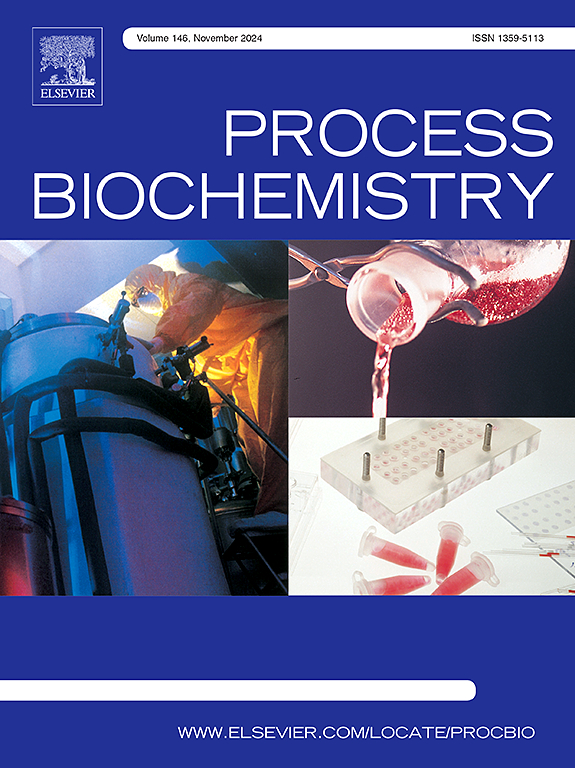以壳聚糖稳定水包水乳液为模板构建微生物培养微室
IF 4
3区 生物学
Q2 BIOCHEMISTRY & MOLECULAR BIOLOGY
引用次数: 0
摘要
采用聚氧聚乙烯(PEO)和麦芽糖糊精(MD)包封植物乳杆菌,制备壳聚糖稳定水(W/W)乳状液进行高密度培养。系统考察了壳聚糖粘度、浓度、MRS肉汤浓度、离子强度和pH对乳状液稳定性的影响。壳聚糖稳定的W/W乳液在各种环境条件下都表现出很高的稳定性,即使在最低壳聚糖浓度为0.02 wt%(重量百分比,wt%)的情况下,7天后也没有相分离。值得注意的是,壳聚糖稳定的W/W乳状液在pH为6.0时,在30天内保持结构完整性。W/W界面的半透性使得营养物质的吸收和代谢物的交换更加有效,有利于植物乳杆菌在乳状基质内的成功包封和培养。采用含1.0 wt% MRS肉汤的乳剂进行最佳培养,最大活细胞数为1.09 × 109 CFU/mL。这些发现表明,壳聚糖稳定的水乳状液在益生菌保护和开发高密度微生物培养的微反应器方面具有重要的潜力。本文章由计算机程序翻译,如有差异,请以英文原文为准。
Building microcompartments using chitosan-stabilized water-in-water emulsion as templates for microbial cultivation
In this study, chitosan-stabilized water in water (W/W) emulsions had been fabricated by using polyethylene oxide (PEO) and maltodextrin (MD) to encapsulate Lactobacillus plantarum for high-density culture. Systematic investigations had been conducted to evaluate the effects of chitosan viscosity, concentration, MRS broth concentration, ionic strength, and pH on the stability of the emulsions. The chitosan-stabilized W/W emulsions demonstrated high stability across diverse environmental conditions, exhibiting no phase separation after 7 days storage even at minimal chitosan concentrations of 0.02 wt% (weight percentage, wt%). Notably, the pH-responsive chitosan-stabilized W/W emulsions maintained structural integrity for 30 days at pH 6.0. The semi-permeable characteristics of W/W interfaces enabled efficient nutrient uptake and metabolite exchange, facilitating successful encapsulation and cultivation of Lactobacillus plantarum within the emulsion matrix. Optimal cultivation was achieved using emulsions containing 1.0 wt% MRS broth, yielding a peak viable cell count of 1.09 × 109 CFU/mL. These findings demonstrated that chitosan-stabilized W/W emulsions hold significant potential for probiotic protection and the development of microreactors enabling high-density microbial cultivation.
求助全文
通过发布文献求助,成功后即可免费获取论文全文。
去求助
来源期刊

Process Biochemistry
生物-工程:化工
CiteScore
8.30
自引率
4.50%
发文量
374
审稿时长
53 days
期刊介绍:
Process Biochemistry is an application-orientated research journal devoted to reporting advances with originality and novelty, in the science and technology of the processes involving bioactive molecules and living organisms. These processes concern the production of useful metabolites or materials, or the removal of toxic compounds using tools and methods of current biology and engineering. Its main areas of interest include novel bioprocesses and enabling technologies (such as nanobiotechnology, tissue engineering, directed evolution, metabolic engineering, systems biology, and synthetic biology) applicable in food (nutraceutical), healthcare (medical, pharmaceutical, cosmetic), energy (biofuels), environmental, and biorefinery industries and their underlying biological and engineering principles.
 求助内容:
求助内容: 应助结果提醒方式:
应助结果提醒方式:


